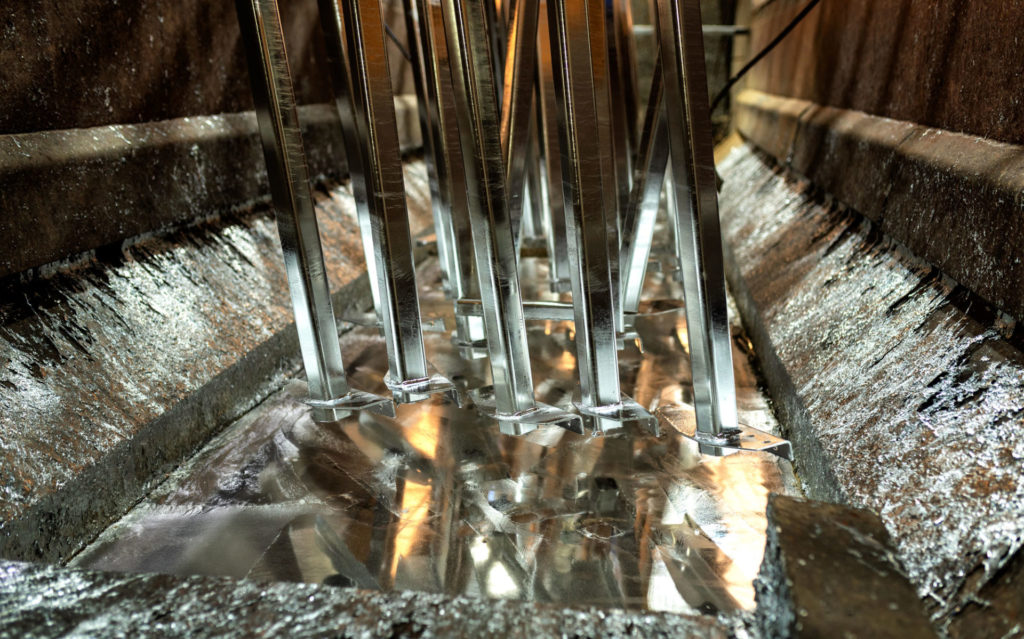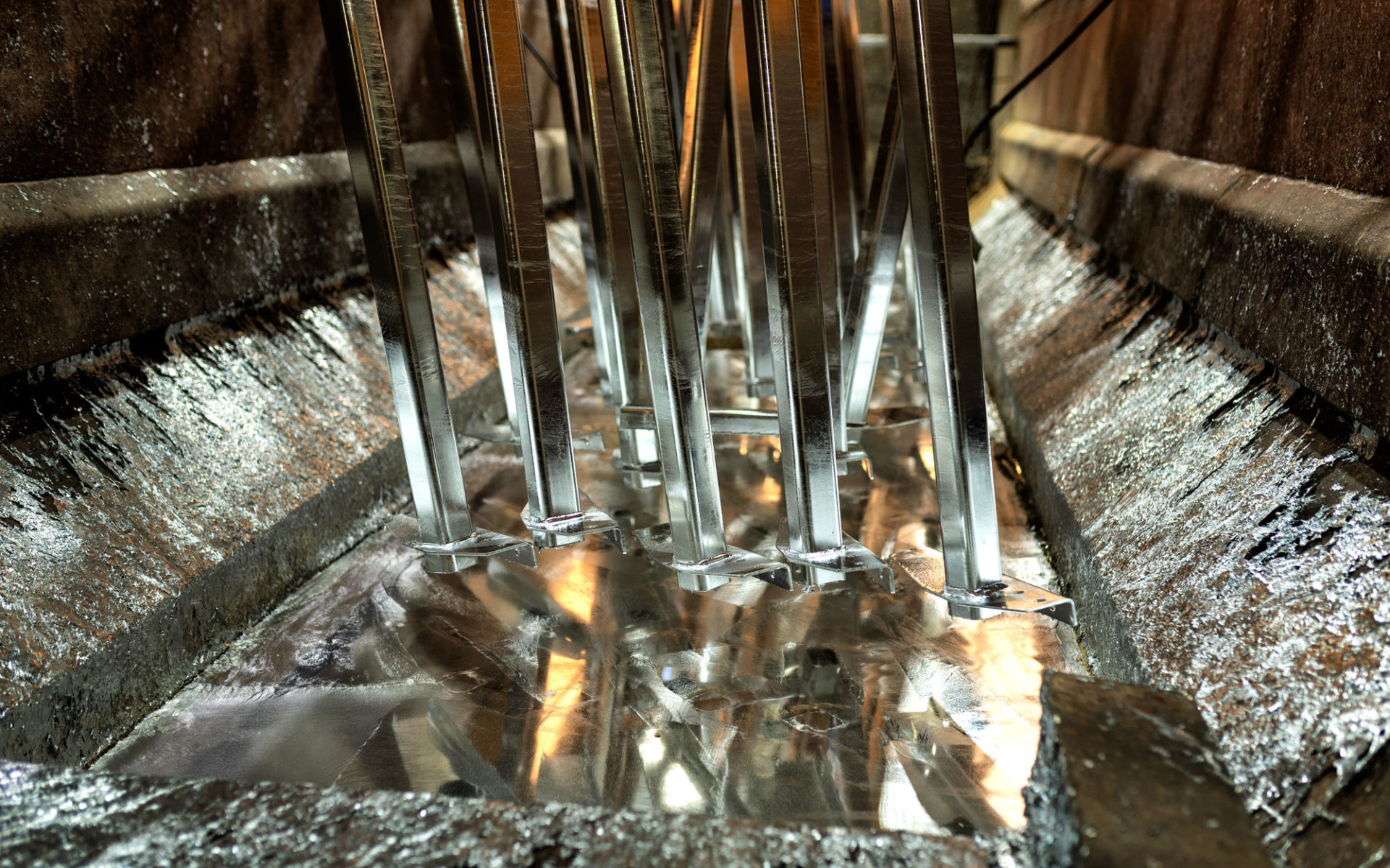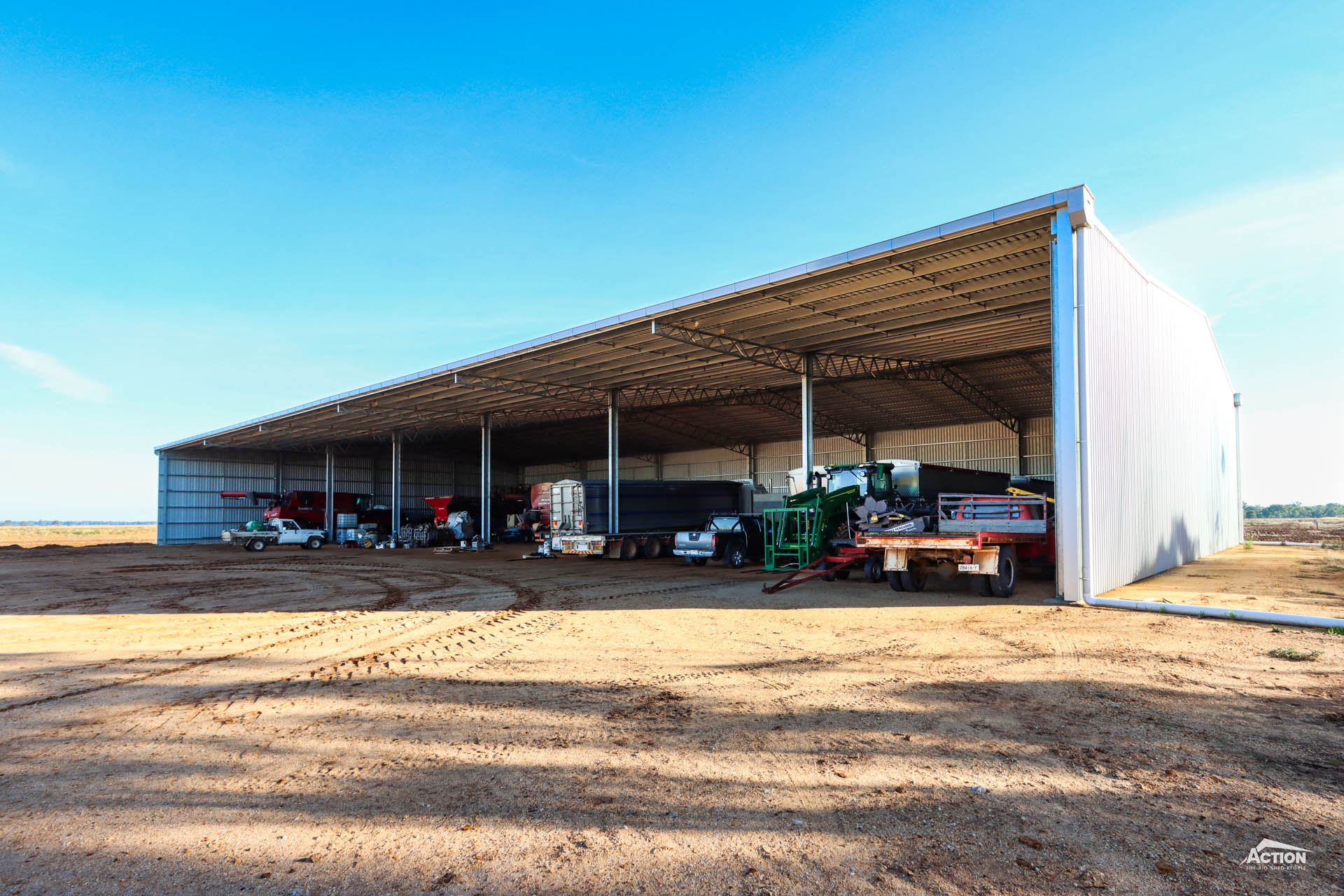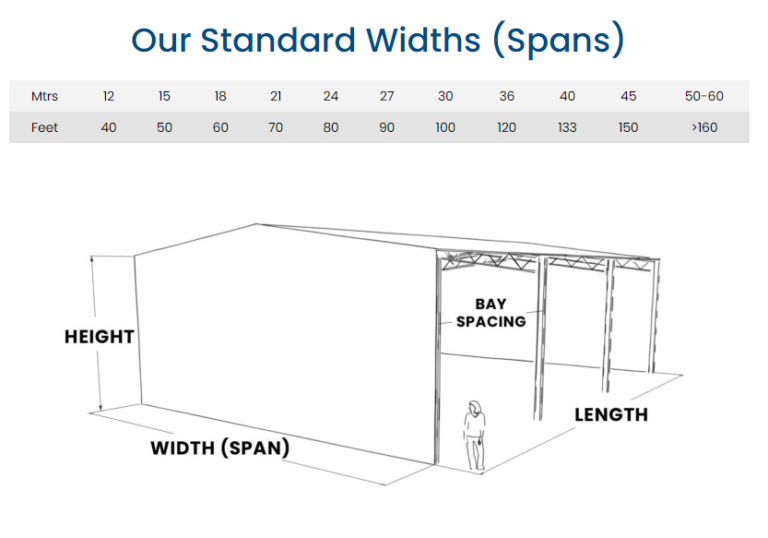Hot-dip galvanising is the process of immersing steel into molten zinc, to provide an even and effective coating. The end result is the ultimate corrosion protection for your steel. But, how can you tell if the steel or steel product you have bought is hot dip-galvanised?
Every shed we build at Action Steel has fully hot dip galvanised columns and trusses, which means we are familiar with the tell-tale signs of hot-dip galvanised steel.
So, how can you tell if the steel on your shed has been hot-dip galvanised?
Identifying Hot-Dip Galvanised Steel
If you are wondering whether the steel on your shed is hot-dip galvanised rather than pre-galvanised or painted, here are a few things to look for.
With hot-dip galvanised steel all the steel is coated
When steel is immersed into the bath of molten zinc it means that every part is protected including recesses, corners and inaccessible areas.
Edges and corners are protected just as much or more than flat areas of steel.
A diffusion reaction occurs when the steel is in the zinc bath. This causes zinc-iron alloy layers to “grow perpendicular to all surfaces” meaning the edges and corners of the steel have a coating equal to, or greater than the flat areas of steel.
While a hot-dip coating is slightly thicker on corners and the edges, a pre-gal coating thins out in these spots because excess zinc is removed with an air knife or mechanical wiper.
Hot dip galvanised steel has a patina film on the outside.
The patina film forms after the zinc metal is exposed to oxygen, forming zinc-oxide which in turn reacts with the hydrogen in the air to form zinc hydroxide. Overtime as the zinc hydroxide is exposed to moisture in the air a thin layer of zinc carbonate forms – this is the passive patina film.
Even if small areas of coating on the steel are damaged, they will still be protected.
The cathodic protection of a hot dip galvanised coating means that if the coating is damaged the zinc will give up electrons to protect the steel, providing a sacrificial coating. This is why, unlike other coatings, a hot-dip galvanised coating does not needs small damaged areas to be touched-up or repaired.

We hope this article has helped you tell when steel has been hot-dip galvanised rather than coated with an inferior coating such as pre-gal or paint. Our Learning Hub has a number of articles on hot-dip galvanising and its benefits, and more – check it out!







